Advertisement
Where Does Boston’s Road Salt Come From? A Local Photographer Finds Out
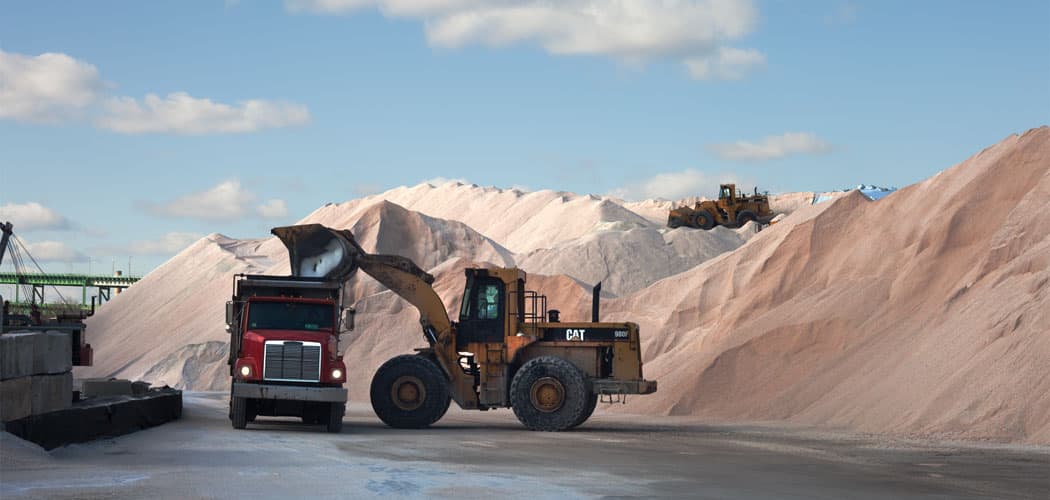
Where does Boston’s road salt come from? The question arose as Allison Cekala was photographing the mountains of road salt at the Eastern Salt Company in Chelsea that are the primary source for the city of Boston's deicing trucks.
She’d arrived in Boston from Oregon in 2012 for graduate studies at the School of the Museum of Fine Arts. And she found herself photographing piles of things—“mostly just dirt”—because they reminded her of West Coast mountains that she missed.
“I called the salt company and asked if I could take photographs,” the Jamaica Plain artist says. “They were more than willing to let me crawl all over the piles, explore, answer my questions.”
Cekala learned that about 20 percent of the salt that piles up there along Marginal Street near the Andrew McArdle Bridge is shipped in to Chelsea from places like Ireland or Mexico. But the vast majority comes from one mine in South America. So she got a travel grant from her school and hopped on a plane.
Her adventure resulted in her exhibition “Road Salt: A 4,500-Mile Journey,” opening at Boston’s Museum of Science on Jan. 31, which offers samples of salt from the mine as well as a documentary video (stills from it are pictured here) and photos.
“The salt is just one material in our everyday lives that we come into contact with and then forget about,” Cekala says. “Discovering that it has this incredible history or past reminds me that a lot of the things we come into contact with have this complicated history or past.”
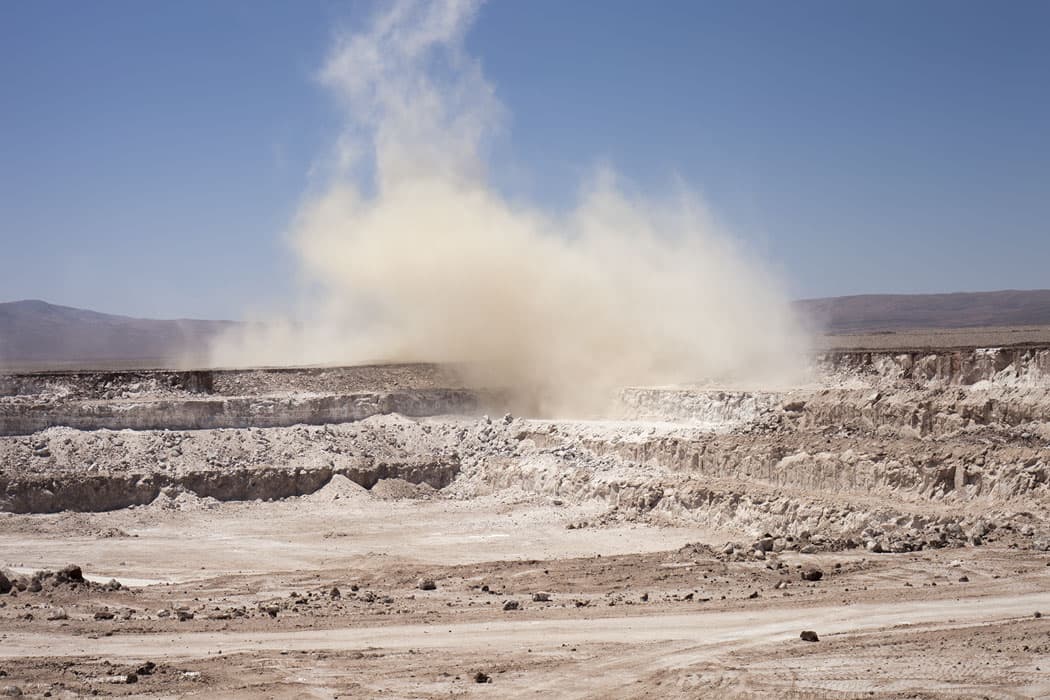
Last March, Cekala flew more than 10 hours to reach Iquique, Chile, the town nearest the mine. A man from the mine company picked her up in a company truck and drove her to the open-pit dig.
“The mine is about 25 miles from the coast in northern Chile,” Cekala says. “It’s in the Atacama Desert. It’s in this area that’s all salt as far as you can see. … It’s also known as the driest place on earth. It’s no plants and no animals. It’s windy and arid.”
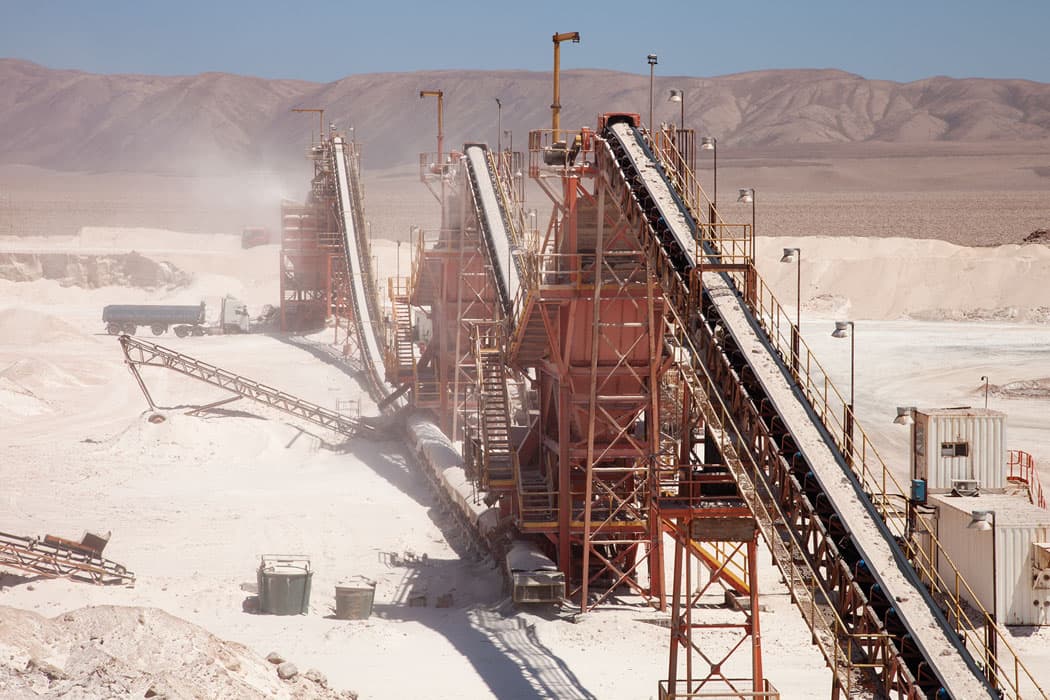
“They dynamite sections,” she says. “They can displace 30,000 tons of salt in one blast. It breaks away pretty cleanly because of the way they do it.”
“It’s like a solid rock. Basically after the blast, there’s all these huge boulders and the boulders get broken up with these huge hammer machines,” she says. Conveyor belts carry the chunks through crushing, sifting and sorting devices. “At the end of the conveyor belt is a loader and it gets loaded onto trucks.”
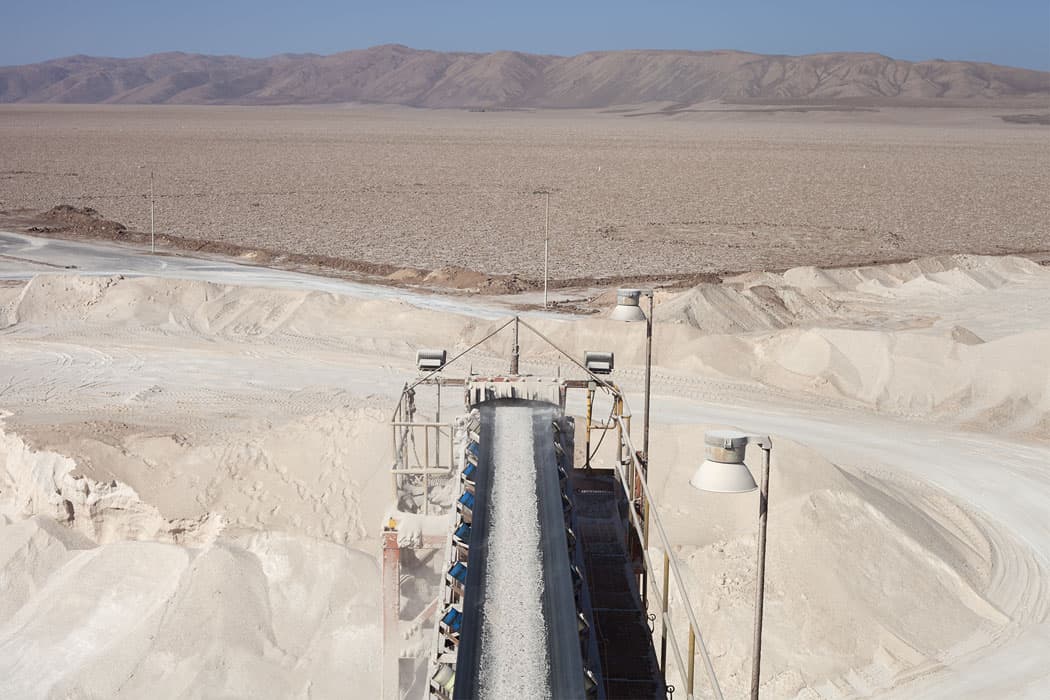
“Then the salt is trucked 25 miles to the coast,” Cekala says. At the port of Patache on the Pacific Ocean, more conveyor belts carry the salt onto giant cargo ships that can carry 50,000 metric tons of the material when fully loaded. “There’s no town. It’s just the port. The nearest town is 45 minutes away driving. It’s such an uninhabited area that the port and the mine are in.”
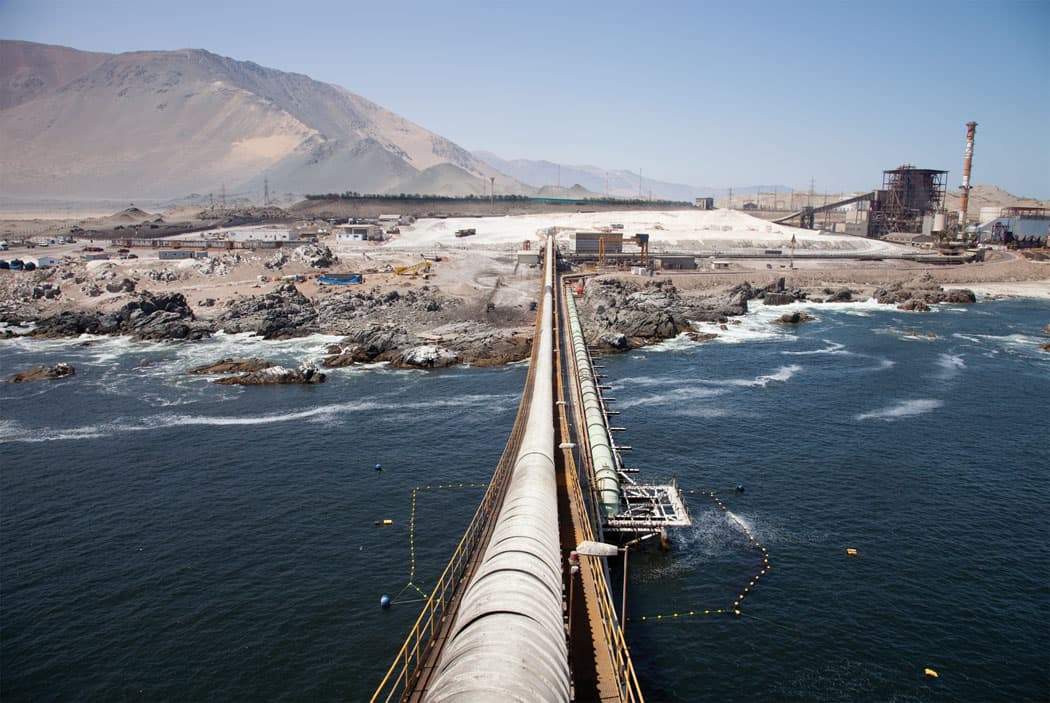
The ships head north, cross into the Atlantic Ocean via the Panama Canal, then steam up the American East Coast to Boston Harbor and, with help from tugboats, up the Chelsea River. “The journey can take two weeks or more depending on the traffic in the Panama Canal,” Cekala says. “It’s 4,500 miles.”
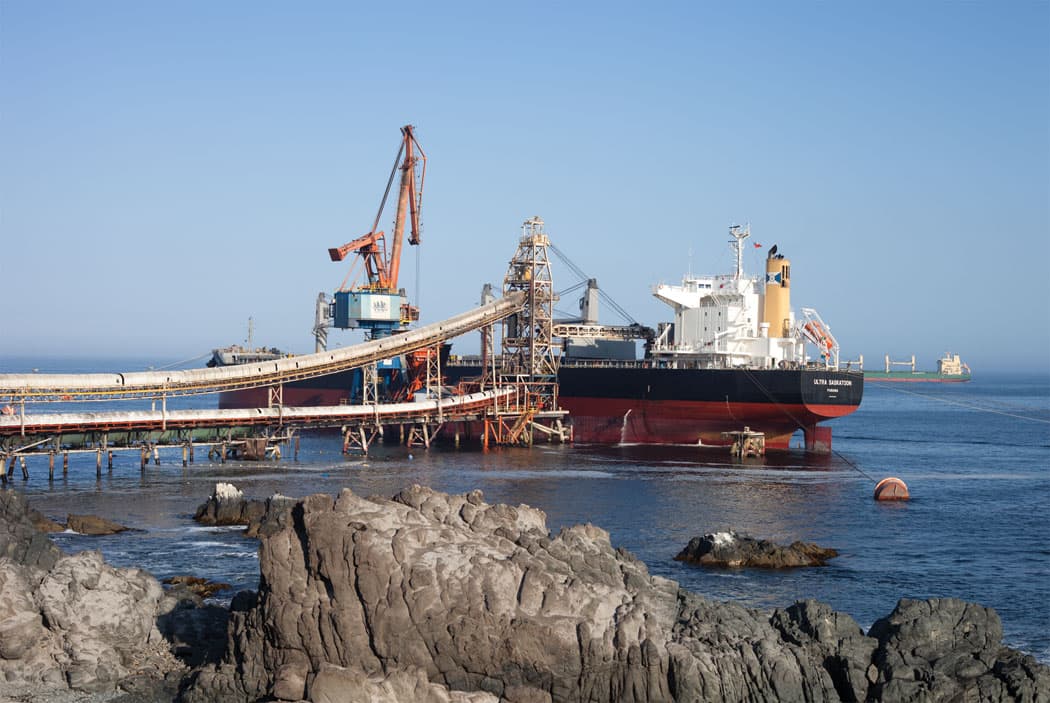
Most of the road salt arrives here in winter aboard ships so heavily laden that they ride “really close to the water.”
“Normally the salt is unloaded by three cranes that are on land in Chelsea,” Cekala says. “The ships in wintertime can come once a week.”
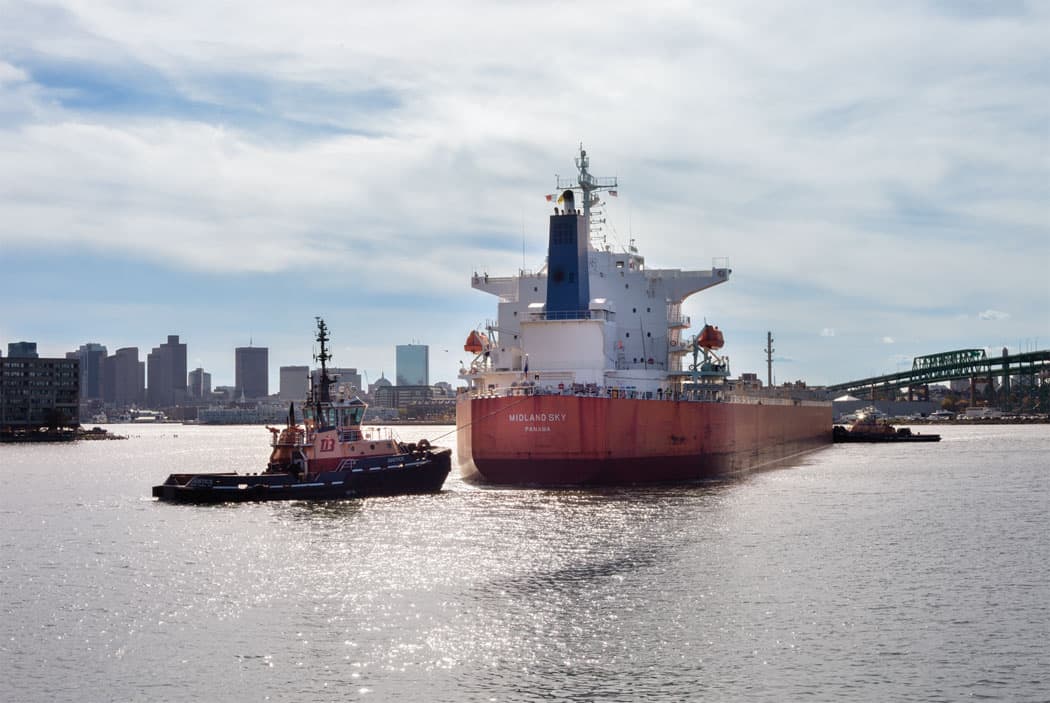
Cranes lower bulldozers into the ship holds. “The bulldozers push the salt into piles and then the crane will come down and pick up the piles,” she says. Front-end loaders transfer the salt into dump trucks, which distribute it to Boston Public Works Department storage depots across the city, where it sits ready to be loaded onto plow trucks to deice roads in storms like today’s snow. (Other agencies also use the company’s salt.)
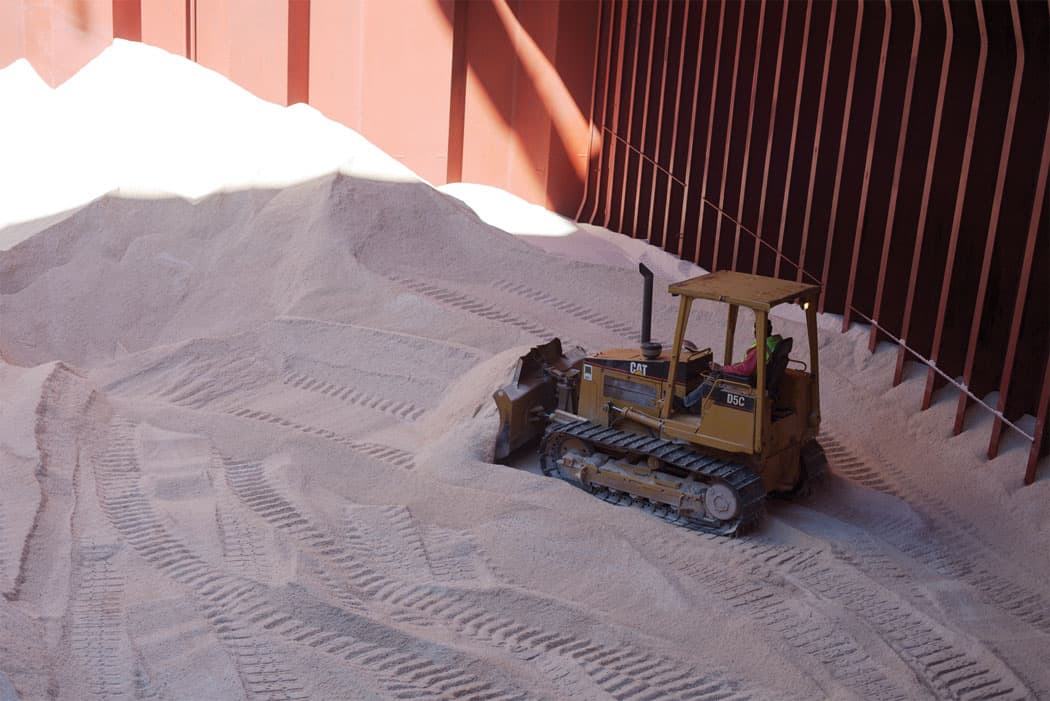
“The magnitude of the labor and the resources that are put into this one material are amazing,” Cekala says. “It goes into this quick use. It will go onto the roads today and then it just disappears.”
What did she learn? Cekala says, “It’s not as simple as globalization is bad, we shouldn’t be doing this. It does provide livelihoods. It goes on the roads. … I didn’t come away with a clear opinion, but feeling in awe of what humans can do.”
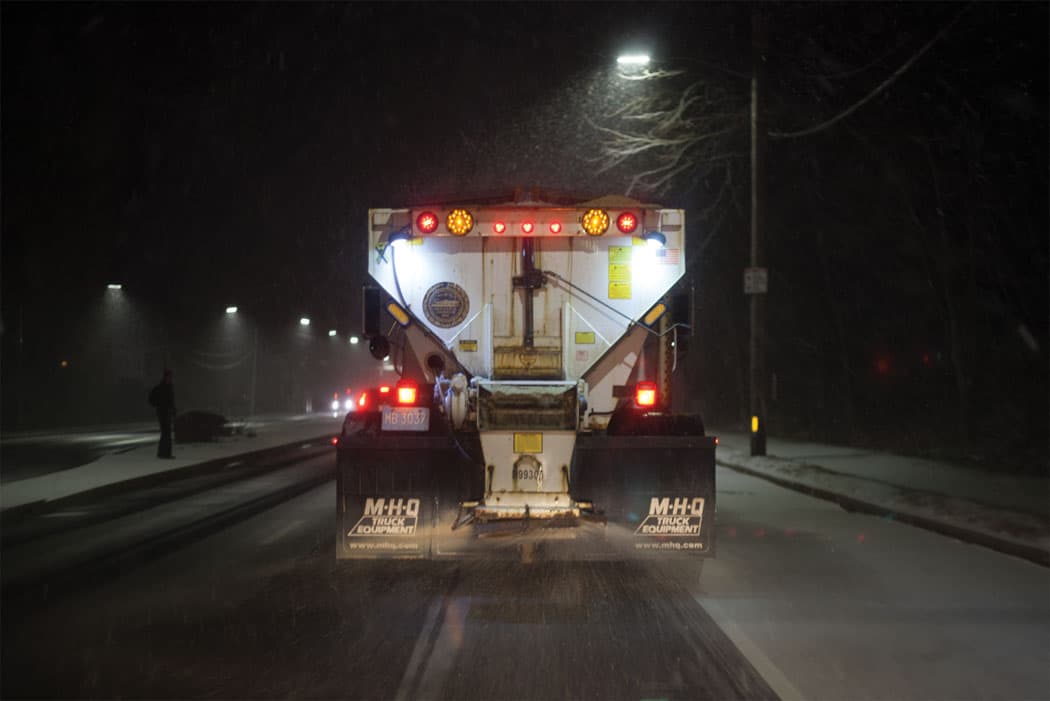
Greg Cook is co-founder of WBUR's ARTery. Follow him on Twitter @AestheticResear and be his friend on the Facebook.
This article was originally published on January 27, 2015.
